Today Team Basil found out why we’ve been wanting to visit Durham for so long – it’s a great little city!
The day started well for Sarah. Nearly every day we were in Scotland we would scan the shoreline of every loch and sea shore in hope of seeing an otter. Scotland is famous for the number of otters it has, but they all eluded us. Today, as Sarah took the dogs for a walk along the banks of the River Wear, just a few yards from our motorhome and in broad day light, she saw an otter. It swam around in the clear shallows of the river, fishing, oblivious of her or the dogs’ presence.

River Wear
Later in the morning we went into Durham city, which is only a fifteen minute walk from our campsite. In my research this morning I discovered that Durham is yet another UNESCO World Heritage Site, awarded for its Cathedral, Castle and their environs.
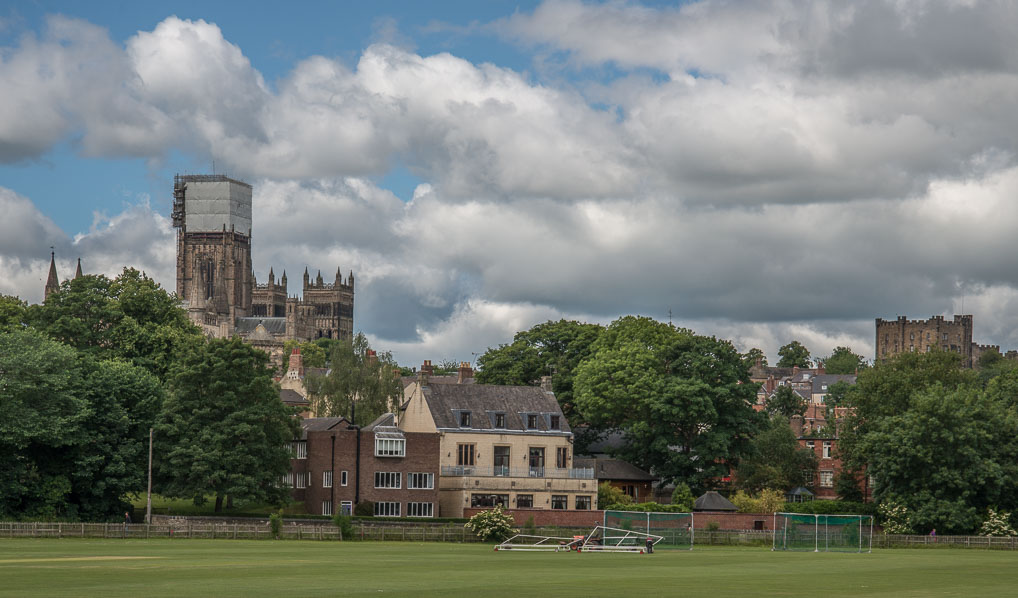
Cathedral and Castle
The first thing we liked is how compact the centre is, with the Cathedral and Castle located on a hill contained in a bend in the river, the site was probably originally chosen for its defensibility. Durham was not a Roman city and was founded when monks decided to move St. Cuthbert’s bones from Lindisfarne where they were felt to be too vulnerable to Viking attack. There’s a charming story about the monks being directed to the site by a milk maid, but I think it defensibility is the real reason for its location.
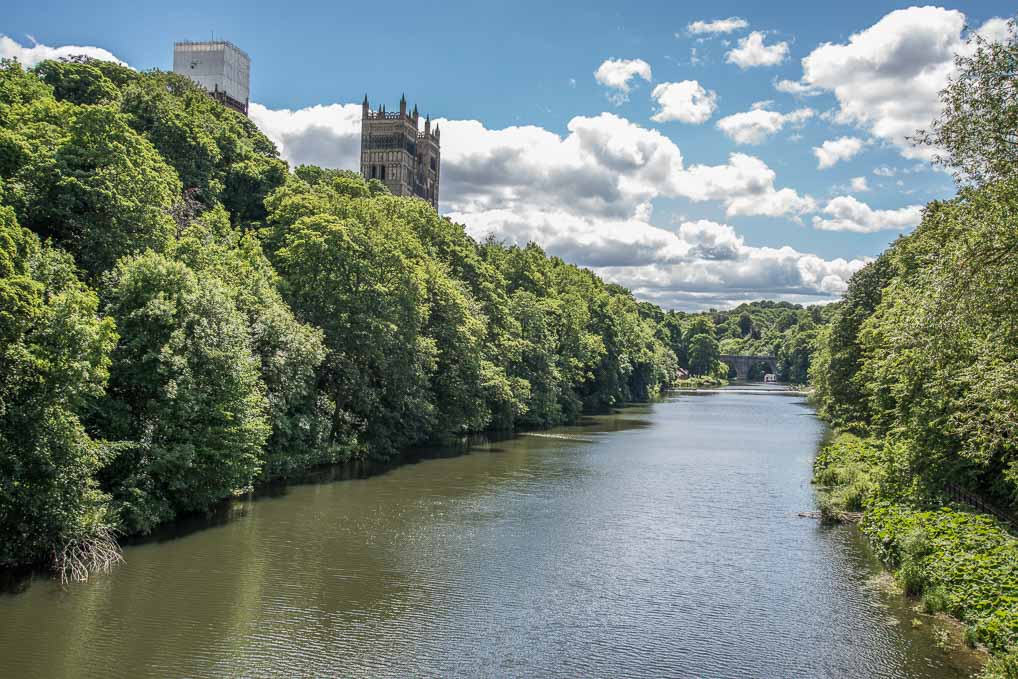
River Wear and Cathedral
Immediately adjacent to the Cathedral and Castle hill are a few streets and a market place which contain the city’s shopping area and it is pleasing to see that it has not been spoilt by post war town planning, although there are a worrying number of empty premises which seems to be occurring in most British towns since the 2008 recession.
We visited the World Heritage Office and Sarah booked a tour of the Castle and I chose a tour of the Cathedral. With the dogs, as you will remember, we have to look round cathedrals and the like on our own with the other looking after our furry friends. I also had a look round an interesting exhibition on some bodies recently exhumed which forensic analysis suggests were prisoners of war, taken to Durham following the Battle of Dunbar where Oliver Cromwell defeated a Scottish army.
Sarah likewise had a look round the Cathedral, but not part of a formal tour.
Sarah was pleased with her tour of the castle, which had been the home of the Bishop of Durham until handed over Durham University and turned into a halls of residence. What a great place it must be to stay as a student. Although much modified it still contains a sixteenth century chapel amongst other original features.
As I waited for her I could see hundreds of students wandering around the city centre, parents in hand, ready for some of the graduation ceremonies which take place in the next few days. The large area adjacent to the cathedral is currently covered in a large marquee. I even helped some Chinese students which my photographic knowledge. They were trying to get photos of each other in front of the cathedral, but were shooting directly into the sun and were puzzled why the photographs were not any good.
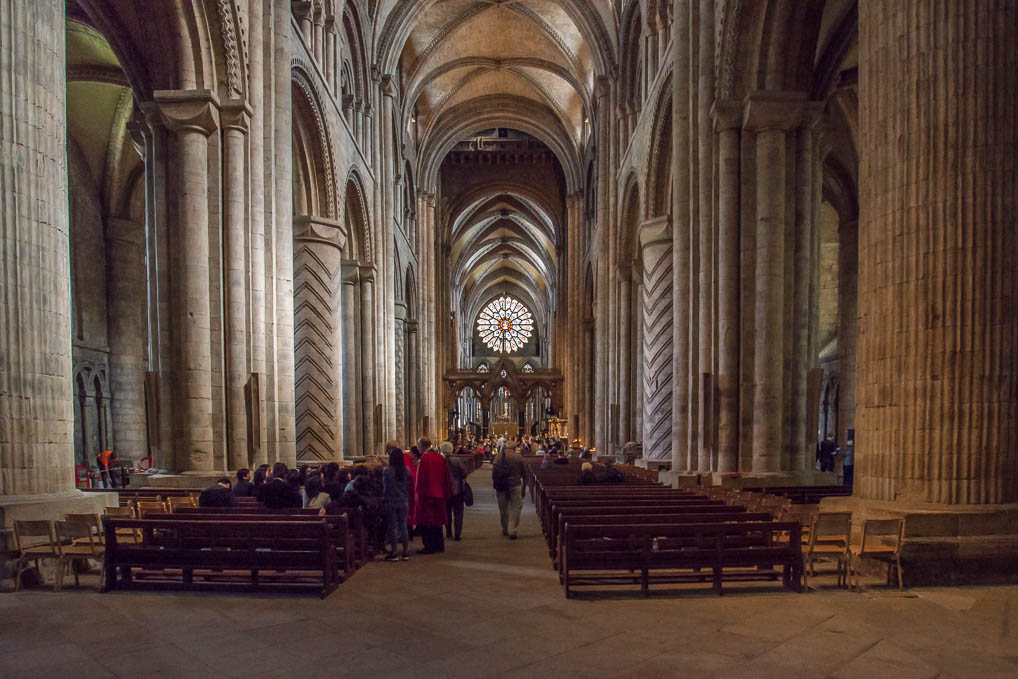
Cathedral
After Sarah took the dogs I got my hour long tour of the Cathedral. The Cathedral was build in the late 11th Century by the Normans on the site of St. Cuthbert’s bones. It is one of the only cathedrals I have seen where the bulk of the building is in the original Norman style. This is party because it was built in only 40 years. Many English Cathedrals were built by the Normans, but the original Romanesque style has been lost, either because the building took so long they evolved into different styles or because later changes has amended the original look. Apart from the great architecture and the shrines of St. Cuthbert and the Venerable Bead, another great plus from my point of view is that the Cathedral is still free to visit! Having visited quite a few of the great cathedrals of England this is almost unique. Top marks to Durham. In all I liked the cathedral immensely. There are architecturally more attractive cathedrals and arguably cathedrals of greater importance, but Durham’s Romanesque style on its own makes it worth visiting.
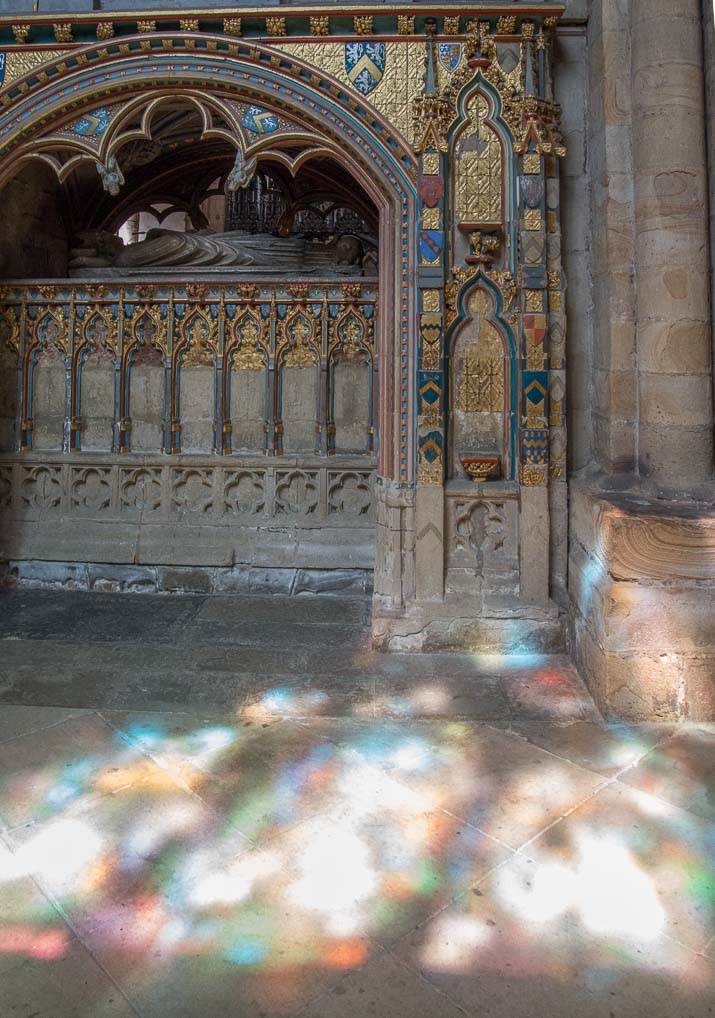
Stained Glass patterns
We loved whole city of Durham and the lovely walks along the River Wear, and the way that the University, England’s third oldest, seems integrated in the city’s fabric. It is a must visit British city which many people, like us, have probably, wrongly, overlooked.
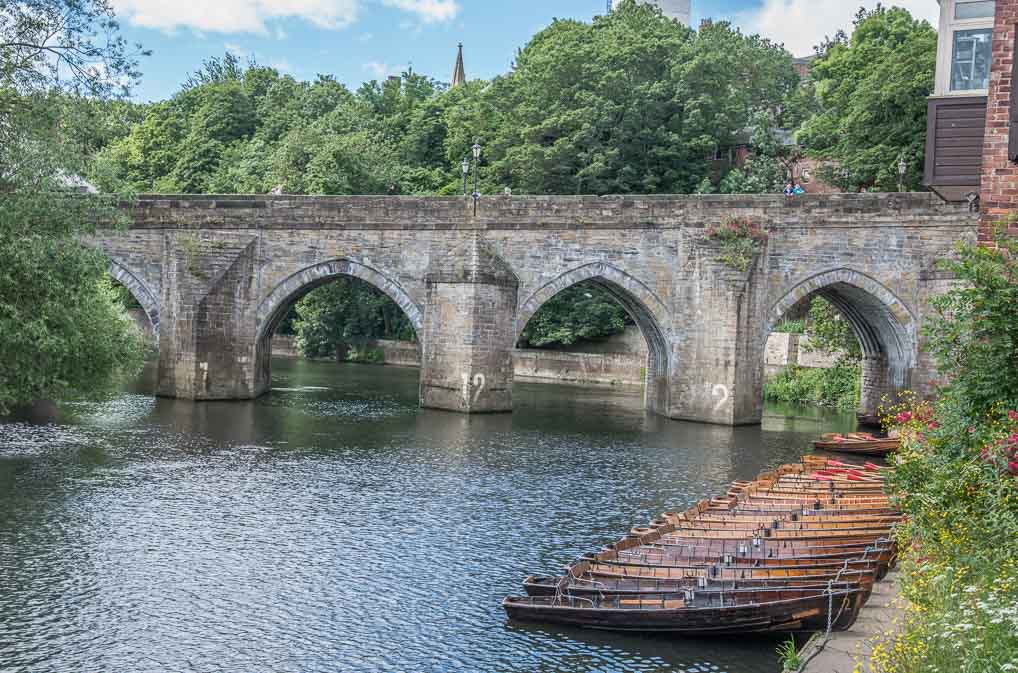
Boats
Tonight we are going into the city to try to find a nice beer garden for a final meal of the trip. Tomorrow we have a, hopefully, straightforward drive home down the A1. So this is the last post of this trip. If you have enjoyed the posts we will probably next be travelling to Spain and, if we have time, Portugal in September and October and I will almost certainly be blogging again on that trip.

Boathouse
